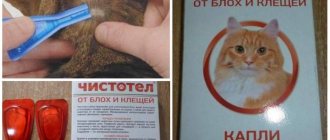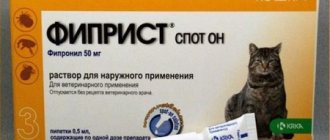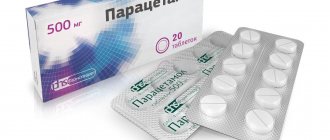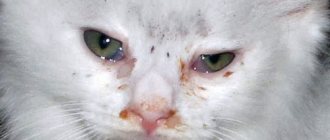Lilies are an exquisite decoration in many homes. But all cat owners should remember that these flowers are deadly for the health of their pets, as they can lead not only to serious illnesses, but also to death. That is why it is very important to know the first signs of intoxication, as well as how to treat a cat after lily poisoning.
Ixodid ticks (forest ticks)
The most common type of tick is the so-called ixodid tick - a forest tick, very familiar to us from its spring-summer aggressions, which are also dangerous for humans.
This type of tick is now widespread almost everywhere, even in city parks and courtyards; they are very hardy and prolific. Their sizes can vary from 0.5 cm (in a hungry state) to 1.5 cm - in a state of saturation.
The color changes from black - dark brown (in a hungry state) to red, with a pinkish or grayish tint - in a state of saturation. Ticks are most active in spring, early summer and autumn.
These ticks are the most dangerous variety, as they can be carriers of many deadly diseases in cats, such as hemobartonellosis (otherwise known as infectious anemia), piroplasmosis, theileriosis - all these diseases are difficult to diagnose, and, in a neglected state, lead to deaths .
At risk, of course, are primarily cats that have free range outside, but you can also bring this danger on your clothes after a walk in the forest or park.
To do this, you need to carefully examine the animal - the muzzle, neck, behind the ears, and stroke it, gently running your palms over the entire body against the fur. If the tick has not yet attached itself, you will see a dark brown insect moving quickly along the hairs.
A cat has a tick, what should I do? Of course, you need to immediately get rid of the tick and destroy it. Indeed, over time, in the process of saturation, more and more enzymes are injected into the cat’s blood, increasing the level of risk of infection of the animal, so you cannot wait for the tick to get enough and fall off on its own. The incubation period for tick-borne diseases is about two to three weeks. Throughout this period, you must carefully monitor your pet’s condition, and if there are any symptoms of illness, immediately contact a veterinarian.
Treating ticks in cats at home. The first step is to assess how long it has been sitting on the cat and how deep it has penetrated the skin. If the tick has been attached for a long time, has eaten away to a large size and a swelling has already formed around it, then it is better to consult a doctor, since carelessly pulling the bloodsucker can damage it, and the fragments of the tick remaining under the skin will increase the risk of the cat contracting one of the diseases .
To remove the entire tick, you need to carefully unscrew it from the wound, turning it in one direction or the other. It is better to do this with rubber gloves or with a special device sold in pet stores. It is a curved stick with a slot at the tip. The slot must be carefully placed under the tick (usually the kit includes 2 devices of different sizes) and the stick should be gently rotated until the tick separates from the skin. You cannot pull up or to the sides, otherwise the head of the parasite will certainly separate from the body and remain under the skin. After you remove the tick, it is best to burn it, since ticks are very tenacious and will get out of both the garbage can and the sewer, and by crushing it with your fingers, you yourself risk contracting dangerous infections. Better yet, take the insect to the laboratory for examination and only after the research has been carried out will you be able to breathe a sigh of relief.
The wound on the cat’s body will need to be treated with brilliant green and monitor the condition of the skin around it to see if there is inflammation, redness, itching - all these are alarming symptoms that will indicate to you that you definitely need to see a veterinarian.
It is almost impossible to completely protect a cat from tick bites, especially if it is walking outside. However, there are now several modern means that can significantly reduce the risk. These means include:
This article was prompted by a recent incident. My Chupacabra really loves grass, a special green grass that is sold in pet stores. And then one day I bought him the wrong grass.
Although, it would seem, how can a pet store sell some kind of different herb!
In the evening, Chupacabra was gnawing grass with pleasure, and at night strange sounds were heard. And in the morning I discovered several strange puddles on the floor - Chupacabra was vomiting at night.
But since we are all accustomed to the fact that cats spit up their fur from time to time, especially if they are fluffy, I did not pay attention to this. And she went to work. And in the evening I found several more caustic puddles on the floor and a completely exhausted Chupacabra lying on the bed like a rag. The cat was clearly poisoned. But what could he have poisoned himself with?
Naturally, the newly acquired weed went into the trash, and the Chupacabra still had to be treated for several days. No one could have expected such a situation from simple cat grass.
How to poison cockroaches if you have a cat at home
Initially, before baiting insects, you need to clean the house, wash the floors, furniture with detergent, and eliminate leaks in the pipes.
Cockroach repellents that are safe for animals, including cats:
- Gel is a chemical product that can be used in an apartment where there are children and cats. The gel should be applied to baseboards, dark places inaccessible to animals, under the sink, in the trash can, near counters and pipes. The main thing is not to forget that you do not need to apply the gel to easily accessible places for animals and children.
- Boric acid - The best homemade insect repellent. Boric acid is mixed with egg yolk, a spoonful of sugar is added, mixed thoroughly and rolled into balls. Afterwards they are laid out in places where pests live. This mixture does not harm humans, but if a cat eats this product, it can become poisoned, so you need to be careful. You should do the same with acid as with gel, pour it where there is no access for animals. A killed mustachioed pest does not harm the health of the animal or family members.
As a result, I would like to say that there is no absolutely safe means of combating insects. Any product contains poison and can harm your pet. Therefore, when processing a room, do not forget about the personal safety and safety of all residents of your apartment.
To get rid of insects, a huge number of different products are used - from creams and crayons to highly toxic compounds, which can only be sprayed in special respirators. At home, poisoning with a cockroach repellent is most common. Modern insecticides belong to class 3 of dangerous substances and should not cause harm to the human body, but failure to follow instructions, storing these products in places accessible to children and pets, or simple carelessness cause intoxication - from mild illness to serious poisoning.
Symptoms of poisoning in cats
If a person himself can, in most cases, determine his poisoning by two or three symptoms, then as for a cat, not everything is so simple. Much depends on what poisoned the animal. If these are spoiled products, the symptoms will be the same, but if they are rat poison or household chemicals, then there is a completely different clinical picture.
Symptoms of poisoning in cats and cats are:
- diarrhea and vomiting, often with mucus and blood
- state of apathy or tremor, trembling
- increased breathing, convulsions
- increased excitability and inappropriate behavior of the animal
Each of these signs can become a symptom of poisoning
Of these symptoms, the safest for a cat are one-time vomiting and intestinal upset, with a stable condition and the absence of other signs.
In all other cases - repeated vomiting and other symptoms - contact the clinic immediately!
Signs of poisoning from cockroaches
You can suspect poisoning from cockroaches based on the following signs:
- The use of cockroach repellents or possible access to them is the main and most important sign. Most often, symptoms of illness appear on the day of application of insecticides or 1-2 days after that. Poisoning often occurs in children who access chemicals and play with cockroach traps or insect chalk,
- When intoxicated, patients experience specific symptoms that help determine the cause of poisoning.
Almost all toxic substances have an irritating effect on human skin and mucous membranes, and when they enter the bloodstream they cause disruption of the central nervous system. Insecticides affect the neural membranes of cells in the brain and spinal cord, provoking the development of pathological excitation, and in severe poisoning, inhibition of the nervous system. Some substances can also cause disruption of the cardiovascular system, increased blood pressure and asthma attacks.
Types of discharge in cats
How can a cat be poisoned? - plants indoors and outdoors
- medications (eg, acetaminophen, NSAIDs, antidepressants, methylphenidate). Eat both your tablets, left in an accessible place, and if you yourself give the animal any drugs prohibited for animals or an overdose/incorrect application, for example, when treating with parasite drops. Many people use drugs for dogs/people for cats, causing them to become poisoned. Remember, the medications you use should only be for cats or those prescribed by your veterinarian. And do not forget about dosages, strictly according to the weight of the animal or according to the doctor’s prescription.
— food poisoning (unsuitable food for cats, poor quality or spoiled). Strictly contraindicated - chocolate, caffeine, onions, garlic, fatty meats, purchased minced meat, citrus fruits, grapes/raisins, apricots, all types of mushrooms, persimmons, nuts, all products with spices, sausages, smoked meats, sweets, canned food for people and much more other. The diet must be balanced especially carefully if your cat is on a natural diet, because poisoning may not be acute, one-time, but will manifest itself over time as chronic pathologies. Try not to buy food in bulk; it can often be spoiled; manufacturers recommend keeping the packaging sealed.
- chemicals, disinfectants in the house, poorly washed floors or other parts of furniture with leftover products can also cause cat poisoning. In case of poisoning with detergents, there may be: Vomiting, diarrhea with blood, difficulty breathing in the animal, convulsions. It is necessary to immediately give a large amount of water and take the cat to the clinic.
- Lead contained in paint, linoleum and batteries - a cat can be poisoned if it eats it.
— Apartment renovation is not only a big stress for many cats, but also a cause of poisoning in animals, for example, when you glue wallpaper, paint and other substances may attract your cat to taste
What plants can poison a cat? Considering our case with fake grass Plants that are poisonous to cats, this is a whole epic. It is very important to limit the contact of cats' faces with some of the plants that owners love so much and unknowingly bring home
Lilies are very poisonous to cats, causing acute kidney failure, vomiting, and lethargy. Cycad palms - cause vomiting, constipation/diarrhea, mainly affecting the liver.
Azalea, laurel, and aloe can cause diarrhea. Begonia - burns mucous membranes.
Asparagus and geranium (the whole plant is poisonous to cats, but especially the leaves) – stomach upset
Other toxic plants - yew, autumn crocus, foxglove, lily of the valley, ivy, boxwood, cyclamen, cyperus, iris, narcissus, snowdrop, calla lilies, hyacinth, tulip, chrysanthemum, belladonna, adonis, aconite, acacia, henbane, geranium, wisteria, St. John's wort, jasmine, honeysuckle, tansy, hellebore, celandine, onion, tomato, elderberry, dandelion, physalis, ficus, rhubarb and violet.
Remember that cats do not always choose only what is beneficial for themselves and not all grass and plants that they can eat are harmless to them. It is important to grow flowers at home that are not dangerous to cats; gift bouquets should also be inaccessible to them.
What are the types of poisoning in cats in the summer, during the summer season? For example, if in the summer a cat is walking on its own in the countryside, when going outside, animals, including cats, are at risk of being poisoned by substances that can poison them - rats, cockroaches, chemicals that are sprinkled on roads.
Poisoning with rat poison can lead to various bleeding (a characteristic sign) and shortness of breath. The antidote, vitamin K1 konakion, is quite difficult to find in our pharmacies, and doctors in clinics may begin to use other hemostatic agents and then search for konakion.
Fertilizers on plots are also dangerous during the summer season. Lawn and garden products can be toxic to animals who ingest them when they wash themselves after walking or lying in a recently treated area.
Poisoning in cats living in an apartment - what must be hidden from the animal? It is important to keep all medications and chemicals out of the reach of animals. When they are poisoned, there can be either mild poisoning - vomiting, diarrhea, or fatal poisoning, due, for example, to acute renal failure.
The most common reason for visiting clinics is food poisoning, when they are fed either spoiled ready-made food or natural food unsuitable for animals.
Compared to poisoning with strong poisons, ingestion of inappropriate food is less likely to lead to acute life-threatening conditions, but causes chronic diseases. What does the liver, pancreas, and stomach most often react to? For any unfavorable signs, even mild ones, it is important to show your animal to a doctor and undergo the necessary tests, even if symptoms such as vomiting and diarrhea could be prevented on your own. A course of additional medications may be required.
Drug poisoning: what medications must be hidden from your cat? Paracetamol is contraindicated in cats; it can cause swelling of the face, cyanosis of the mucous membranes (cyanosis), shortness of breath, renal failure, gastritis/stomach ulcers. In dogs it can cause nausea, vomiting, lethargy, and pale mucous membranes, but may be asymptomatic.
Animals are also contraindicated in such painkillers - non-steroidal anti-inflammatory drugs such as ibuprofen and indomethacin - they are very toxic and can also cause poisoning aspirin, piroxicam, caroprofen, naproxen, phenylbutazone.
Their use with glucocorticoids is especially contraindicated. They can cause stomach ulcerations, stool and vomiting of blood (“coffee grounds”), abdominal pain, and acute renal failure. In case of poisoning with these drugs, it is necessary to induce vomiting, and in case of aspirin poisoning, the stomach can and should be washed out, even if 3 hours have already passed after poisoning, since aspirin can form conglomerates.
Summer time is the time for walks in the fresh air.
But in nature, in forests and even parks, danger awaits pets - ticks. How to detect and get rid of the parasite?
Causes
Poisoning in cats is a fairly frequently diagnosed phenomenon, usually occurring at lightning speed or acutely. It should not be ruled out that this condition can also occur in a severe, protracted form. If appropriate measures are not taken, poisoning can cause serious functional disorders in the digestive tract and other organs and systems.
The main reason that can provoke poisoning in furry purrs is the hunting instinct inherent in nature, the thirst for independent research. Cats are very curious, inquisitive and very smart creatures, with well-developed hearing and sense of smell.
Cats, freely walking the streets, happily hunt for mice, birds, insects, and other attractive “prey.” In addition, furry purrs are not averse to tasting plants, new substances or game. Do not forget that rodents, pigeons, and other types of birds can be carriers of dangerous bacteria, viruses, and fungi.
In addition, it must be taken into account that infection of pets occurs not only through contact with infected individuals, but also through nutrition, by eating food contaminated with bacteria, forbidden “delicacies”, which can lead to severe food poisoning.
The main causes of poisoning in cats:
- entry into the body of potent toxic substances, poisons, chemicals;
- overdose of pharmacological drugs;
- ingestion of heavy metals (lead, aluminum);
- eating plants that are dangerous to animals;
- bites of poisonous insects, snakes;
- low-quality feed, stale food;
- severe helminthic infestations.
Poisoning in cats can be caused by poor-quality, stale, moldy food, water infected with viruses and bacteria. The cats will not refuse to try the culinary delights from our table. At the same time, you need to remember that smoked foods, sausages, spicy, salty foods, and other forbidden delicacies can provoke poisoning of your pet. Therefore, strictly remember that you need to feed cats with special professional industrial food of “premium”, “elite” class or natural food prepared especially for your beloved cat.
The greatest danger to the life and health of cats is observed when poisoning with potent chemicals - herbicides, insecticides, rat poison. For example, when hunting for a mouse, you should not rule out the fact that it is infected with dangerous viruses that release endotoxins, which contribute to the development of severe intoxication.
Cats by nature are very clean animals that constantly take care of their hygiene by licking their luxurious fur coat. At the same time, when washing your face with your paw, if there are particles of dangerous chemicals on the surface of the hairs, if they get on the mucous membranes of the oral cavity, through microcracks, wounds, abrasions, cuts on the skin, they can cause poisoning.
Poisoning in cats can be caused by tobacco smoke, household chemicals - detergents, bleaches, powders used in the household, antifreeze. Some types of indoor plants can cause severe poisoning in cats.
Dangerous indoor flora for cats:
- dieffenbachia;
- ivy;
- dracaena;
- alocasia;
- scindapsus;
- digitalis;
- philodendron;
- syngonium;
- spatephylium;
- ficus;
- exotic plant species.
Advice! Cats that do not leave their house or apartment try to clear their stomachs of hairballs and other substances by eating indoor plants that can cause harm to the body. Taking into account the physiological needs of animals, purchase special ready-made food that promotes hair removal. You can also germinate a special “grass” in containers, the seeds of which are sold in veterinary pharmacies.
The cat's body is susceptible to the effects of various acids and alkalis. Mercury, phosphates, and nitrogen-phosphorus fertilizers used for garden crops and ornamental plants are especially dangerous for cats.
We should not forget the fact that many people treat our smaller brothers inhumanely. Dog hunters appropriately add deadly baits, poisoned “treats” for animals containing strong poisons.
For example, for the intentional poisoning of cats and dogs, the drug most often used is isoniazid, a drug prescribed for the treatment of tuberculosis in humans. And this, unfortunately, is the most pressing and pressing problem of modern society.
Important! In order not to provoke the development of poisoning in a cat, when carrying out therapeutic, preventive deworming, using insecticidal and acaricidal drugs, sedatives, strictly adhere to the established dosage, which is indicated in the instructions.
Representatives of the cat family, unlike dogs, cannot be forced or taught not to pick up food from the ground, much less prohibited from hunting birds, rodents, and insects. Of course, if your pet is well-fed and happy with life, the animal will not look for food or pick up tidbits outside the home. However, no one has canceled natural instincts. A cat, kitten, cat can easily become poisoned by picking up inedible food from the surface of the ground or catching the desired prey.
Owners of furry purrs should have a good understanding of the symptoms of poisoning and know how to help the animal at home before the veterinarian arrives. In some cases, especially when cats are poisoned with strong poisons or chemicals, you need to act extremely quickly, noticing the first appearance of characteristic symptoms.
Types of ticks
The following types of parasites are distinguished:
- Ear mites. These tiny insects are not visible to humans, they can only be detected by characteristic symptoms;
- Subcutaneous mites are also called scabies mites. Such parasites are very tenacious and cause weakening of the immune system. Mites cause redness of the skin and hair loss;
- Forest ticks are the most dangerous parasites. Despite the name, they also live in city parks. There are different types: from subcutaneous to intracellular.
Ticks often cause the death of a cat, and therefore it is very important to pay attention to alarming symptoms in a timely manner.
What to do if your cat is bitten by a tick
If a cat is bitten by a tick, it is necessary to determine its type, of which there are more than 1000: dust ticks, ear ticks, scabies, etc. Ixodid ticks are considered the most dangerous for cats, as they are carriers of pathogens of many diseases.
It is necessary to examine the surface of the skin to determine the extent of its penetration. It is advisable if a specialist removes the parasite, since there is a risk of leaving part of the head under the skin. Also, when the insect moves strongly, the spread of infection increases.
Most often, bloodsuckers choose to bite the groin area, behind the hind legs, ears, stomach and armpit. An attached parasite is visible to the naked eye; immediately after detection, it is advisable to isolate the cat from children, take it to the veterinarian, or try to get rid of the insect yourself.
If a cat is bitten by a tick, then at this moment the animal does not experience pain or discomfort because upon penetration the parasite releases pain-relieving enzymes. Therefore, during the active months of parasite reproduction, you should regularly examine your cat; you can run a comb against the grain and feel the vulnerable spots.
How to detect a parasite
Cats do not know how to speak and complain about their health. Fortunately, even invisible mites can be identified by the accompanying symptoms.
Ear mites cause a cat to constantly scratch and press its ears and shake its head. Blood clots are noticeable in the ear itself; in advanced cases, there is pus and an unpleasant odor.
Subcutaneous mites cause the cat to itch violently, sometimes to the point of bleeding. The pet's skin becomes inflamed and red. The fur falls out, exposing damaged skin, which causes various diseases.
Forest ticks are easy to detect: they stick to the skin. After being bitten, the insect quickly grows to the size of an olive. Intracellular mites reveal themselves with vivid symptoms: the cat begins to develop fever, intoxication and weakness. The temperature often rises and heart palpitations begin.
Can a cat get poisoned by lilies?
For centuries, lilies have been considered one of the most beautiful flowers; they have long symbolized purity, purity of thoughts and nobility, and in France they even became a symbol of the royal dynasty. And these days, bouquets of lilies are incredibly popular. It would seem, well, how could this beautiful flower be dangerous for Murka or Barsik?
However, for a cat that has tasted a couple of petals of this plant or licked its pollen, the matter can end in severe poisoning and even death.
Rehabilitation process
After providing pediatric assistance and carrying out the necessary procedures, owners are usually allowed to take the poisoned pet home.
The only exceptions to this rule are extremely severe cases of intoxication, when the animal must constantly be under IV drips or dialysis. Then he will be kept in a hospital until his general condition stabilizes.
In any case, after bringing the sufferer home, cat owners need to follow all the doctor’s recommendations, including how, what and how many times a day to feed, what medications to give, and how often to go to the clinic to monitor the pet’s condition.
Important!
In the event that IVs were prescribed, but the cat was not left in the hospital, the owners will have to take him to the clinic for procedures at the appointed time. Violation of this regime is completely unacceptable, since at the slightest deviation from following the doctor’s recommendations, the cat may develop severe complications caused by damage to the kidney tissue.
Lily poisoning is considered very dangerous for cats, but the likelihood of developing serious complications depends to a large extent on the individual characteristics of the animal. Some cats are more susceptible to lily toxins, others less so. Some of the purrs recover after minimal therapy and do not experience any consequences of poisoning in the future.
Others need weeks of dialysis to allow their kidney tissue to begin to recover. However, in many pets, unfortunately, the kidneys do not begin to function normally despite all the measures taken and they die within a few days after their fateful “acquaintance” with flowers.
You can learn what first aid an owner can provide if a cat is poisoned from the following video:
Conclusion
To prevent a cat from being poisoned by lilies, you must follow simple rules: do not place bouquets of these flowers in the room where the animal is, and outside the city or in a private house, do not allow your pet to approach the flowers, smell them, or, when lilies are in bloom, Moreover, chew them.
If an accident happens and the cat does eat lilies, then it is necessary to take him to the clinic as soon as possible or immediately begin providing first aid to the pet if for some reason a trip to the doctor is impossible.
Source: https://lapulik.com/o-koshke/bolezni_i_lecheni/zheludochno-kishechnogo-trakta/otravlenie/liliya.html
How to get rid of ticks on a cat
It is possible to get rid of skin parasites on your own, and not always. In other cases, contact your veterinarian immediately: the cat’s condition is dangerous.
If you find a tick attached to your cat, evaluate how long the parasite has been sitting there. The swollen skin and large size of the insect indicate that it has been feeding for more than one day. In this case, do not remove the tick yourself: there is a risk of infecting the cat.
A small tick that has not penetrated deep into the skin can be carefully removed without the help of a veterinarian. Follow the instructions:
- Wear surgical gloves. This way you will reduce the risk of infection - many diseases are transmitted to humans through the skin;
- Do not use thread and tweezers unless you have experience removing ticks this way. Do not pour liquids on the insect - the bloodsucker will spit it into the wound;
- Don't panic and try to get the insect out as quickly as possible;
- Place the cat on a light cloth to catch the parasite as it attempts to escape;
- Carefully take the tick and slowly turn it in different directions, gently twisting it;
- If the insect is too small to pick up with your fingers, lightly stroke it with your fingers - the bloodsucker will pop out on its own.
After removing the tick, take it to a laboratory to be tested for vector-borne diseases. If this is not possible, burn the insect - this will definitely destroy it.
Treat the cat's wound with brilliant green and monitor the pet's subsequent condition. At the slightest suspicion, take the animal to the veterinary clinic.
About poisons for cockroaches
Cockroaches are arthropod insects that have lived in human homes since cave times. They actively destroy food supplies, spoil food and household items, and are carriers of infectious diseases and parasites.
It is almost impossible to get rid of cockroaches without the use of special means. They multiply quickly, live for several years and are remarkably resistant to poisons, radiation and radiation.
Cockroach poison comes in different forms:
- insecticidal gels,
- aerosols,
- suspensions,
- crayons,
- traps,
- folk remedies.
Depending on the type and form, insecticides may contain dangerous substances such as chlorine, anabasine, organofluorine and other compounds that cause damage to the neuromuscular system of insects, damage their vital organs or lead to deprivation of the ability to reproduce.
Insecticide poisoning occurs most often due to:
- Failure to comply with safety precautions - when preparing or using solutions and aerosols. It is recommended to carry out the treatment of the premises using a respirator, in the absence of people and pets, with the windows open. Violation of any of these rules can lead to poisoning. Most often, at home, poisoning occurs when spraying aerosols in an enclosed space or inhaling fumes during the preparation of solutions and surface treatment.
- If the substance gets on food, water, clothing or bedding, consuming food or water with insecticides can cause serious poisoning, and contact with clothing and bedding can cause skin irritation or an allergic reaction.
- By negligence - such poisoning occurs when household insecticides get into the stomach or mucous membranes of children who find aerosols, pencils or dry mixtures and try them or spray them near the face. Unfortunately, it is precisely such poisonings that occur most often and are the most severe. No less often, pets suffer from poisoning - cats, dogs, who also need help and treatment.
How to protect your pet
It is possible to prevent a parasite attack altogether. There are special remedies for tick bites, such as:
- Collars impregnated with a special substance. A simple method of protection - you put it on your pet and he doesn’t care about ticks. However, make sure that the cat does not eat the collar: the active substance is poisonous;
- Drops are the most popular tick repellent. The medicine is applied between the shoulder blades once a month. If your cat doesn't have allergies, this is ideal;
- Sprays for wool. The drug is sprayed on the cat and care is taken that the spray does not get into the eyes or mouth. The pet should not lick itself, so the product is difficult to use.
After every walk, be sure to examine your cat, even if you use such products. Don't be afraid of ticks: if you detect the parasite in time and know what to do with it, there is nothing to worry about.
Conventionally, poisoning in cats can be divided into several categories:
- Chemical poisoning. Of course, a cat who voluntarily tastes bleach or mosquito repellent is a rare occurrence, but nevertheless, animals are poisoned by chemicals quite often. The fact is that these animals are very clean: they lick their fur, muzzle, and paws, the surface of which may contain chemicals. Poorly washed shampoo and flea and tick treatments can also cause severe poisoning. For many cats, human cosmetics are also attractive - soap with a delicious smell or cream from a tube. Substances can also enter the animal’s body by inhalation - nicotine smoke, fumes of paint, varnish, gasoline, deodorant are dangerous for cats;
- Medicines. Even without going outside, a cat can get poisoned, in particular, from medications that the owners forgot. Aspirin, no-spa, sedatives - this is not a complete list of drugs that cats can taste.
- Chemistry and plants. Rat poison, insecticides, and herbicides that accidentally get on the animal’s fur lead to poisoning. Also, some plants can have this effect, even if the animal just chewed a leaf.
- Food poisoning. As a rule, cats can also get food poisoning, although these animals are very sensitive to preservatives and will not eat expired food, but the foods that people give from their tables negatively affect the cat’s body. Chocolate, smoked meats, spicy foods, etc. can also cause severe food poisoning;
- Bites. Bites from spiders, poisonous snakes, and insects can also cause a severe allergic reaction and poisoning, but they cannot be treated using traditional methods. In this case, time is precious, contact a specialist - he will select an antidote and treatment program.
What part of plants is poisonous to cats?
The enmity between lilies and cats is due to the fact that the plant produces a specific toxin that has a poisonous effect on the animal’s body. The toxic component is included in all parts of the flower - petals, leaves, stems and even pollen. However, the most dangerous are the petals and the flowers themselves . In order to get poisoned, a small leaf is enough for an animal.
Most often, cats are extremely picky about the foods they eat and rarely eat indoor flowers. The main risk group is: small kittens who love to play with plants, cats who prefer to relax on the windowsill, near indoor flowers.
A pet can become poisoned by eating part of a lily, licking pollen from it, or drinking water from the vase in which the plant is standing. Often, pollen accidentally gets on a cat's fur, after which the animal, while washing, licks it off and becomes seriously intoxicated. Even sniffing a flower is deadly for an animal.
If the owners notice orange or yellow pollen on their pet's fur, the cat should be bathed immediately.
Symptoms of poisoning in cats
Signs of poisoning can be different, the degree of their manifestation depends on the type of toxic substance, quantity, route of entry into the body, time of exposure, and the state of health of the cat. The most characteristic symptoms are drooling, lack of appetite, lethargy, vomiting, diarrhea, poor coordination of movements, excessive agitation, convulsions, dilated pupils. Be sure to contact a veterinarian to provide qualified assistance to the animal, but you can provide first aid yourself.
If a toxic substance gets on the fur or skin, you must immediately clean it with soap and warm water; do not use special products and shampoos - this can worsen the animal’s condition.
If your cat has ingested an acid, solvent, or alkali, you should not induce vomiting because these substances will continue to act as they move down the esophagus. It is necessary to give the cat a drink of substances that can neutralize the effect of the drug: if an alkali is swallowed, apple cider vinegar or lemon juice diluted with water; if an acid is swallowed, egg whites beaten with water. The easiest way is to give the animal something to drink from a small syringe or syringe without a needle. It’s more convenient if you can swaddle the cat, but you can’t throw her head back - drink in a horizontal position. If the animal is unconscious, very weak, or there is a violation of swallowing functions, drugs cannot be given; wait for the veterinarian. It makes no sense to induce vomiting if more than 3 hours have passed since the poisoning - most of the toxic substances have already been absorbed into the blood or moved into the intestines.
Provided that less than 3 hours have passed and the case does not apply to one of the above, you need to give the cat an emetic. This can be table salt in a ratio of 1:4 - 1 part salt to 4 parts water. A solution of hydrogen peroxide in equal proportions with water, pour in a little, every 10 minutes. Give as much water as needed to start vomiting. You can simply pour a large amount of boiled water into the cat; in the clinic, the animal is washed with a probe, but at home, a regular syringe without a needle will do - the main thing is to induce vomiting, and then prevent dehydration.
After the animal’s stomach has been cleansed, you need to give it a sorbent: crushed activated carbon, Atoxil, Enterosgel and other drugs are mixed with water and the resulting suspension is given to the pet. For bites from poisonous animals and insects, a specific antidote is administered - this is done in the clinic, so the cat must be taken to the veterinarian immediately. You can stabilize your pet's condition with intravenous infusions.
Even if the animal's condition has stabilized, take it to the veterinarian, since poisons can affect the body in different ways and cause serious consequences. Antidotes, laxatives and diuretics should not be administered without a doctor’s prescription, since dehydration is a threat to the cat’s life.
How to help a cat at home with food poisoning
Regardless of what caused the intoxication of the body, a veterinarian should assist the cat in case of poisoning. If possible, you should contact a veterinary clinic as soon as possible. If visiting a doctor is possible only after some time, it is necessary to take measures aimed at reducing the absorption of poison into the blood.
What to do if your cat is poisoned:
- Find out the cause of poisoning;
- Remove the source of poisoning from the pet’s access area;
- Rinse the stomach. To do this, use clean water, which is poured into the cat’s throat using a large syringe without a needle. It is allowed to pour in 250-500 ml of liquid at a time. After this, vomiting is induced by pressing on the far part of the tongue;
- Before washing the stomach, you need to give a sorbent - activated carbon is suitable for this purpose. It prevents toxic substances from being absorbed into the walls of the stomach, taking them onto itself. No more than half of one tablet should be given at a time. It must be crushed, diluted with a small amount of water and poured deep into the throat. Vomiting can only be induced after a few minutes. It is necessary to wait for the sorbent to absorb toxic substances;
- If several hours have passed since the poisoning, you can do an enema to remove toxic substances from the intestines. The volume of liquid introduced into the rectum should not exceed 50 ml;
- To avoid dehydration, your cat needs to be given water. If you refuse water, you should force drink, using a syringe without a needle. You need to drink little by little, with an interval of 15-20 minutes. If vomiting occurs frequently, it will be good if, instead of plain water, you give your pet a saline solution, which helps restore the water-salt balance.
If you are vomiting, you should not use antiemetic drugs. Vomiting is a natural reaction of the body in which harmful substances are removed from the stomach.
Prevention of poisoning in cats
- When growing plants at home, make sure they are not poisonous to pets. Make sure that there are no poisonous plants in flower bouquets;
- Store medications, even in bottles and vials, in locked cabinets where the animal cannot reach. If you accidentally drop a tablet on the floor, find it and throw it in a bucket, otherwise your pet may get it;
- When taking preventive measures against fleas and ticks, follow the instructions, buy the drug according to the age of the cat, do not use analogues for dogs - they can be very dangerous;
- Do not leave food that is not intended for cats on the table or open shelves - fatty canned food, smoked meats, chips, etc. are especially dangerous;
- The trash can should have a tight lid, or better yet, be out of reach of the animal;
- All cleaning products, household chemicals, and insecticides must be stored in places inaccessible to animals.
Cockroaches and how they get into the house
When cockroaches appear in the house, you begin to think: “Where did the insects come from?” There are many ways pests can enter your home. Let's look at the main ones:
- Neighbours. It may happen that your neighbors have baleen pests, but in this area they do not have enough space and food to reproduce. They begin to move and develop new territories. This is how cockroaches may end up in your apartment. For this reason, after some time, the entrance and the entire house may suffer from unwanted insects.
- Bullying. Your neighbors are suffering from an invasion of mustachioed “friends” and are beginning to actively fight them, creating conditions unsuitable for the life of cockroaches. During disinfection, not all pests die; a certain number of cockroaches can escape and run to the next apartment.
- Purchases. Often, pests can enter the house along with purchases brought from the store. Often pests enter an apartment with the purchase of furniture, since the furniture is stored in warehouses where pests live in huge quantities.
- Things. Many people buy things and furniture secondhand, and together with them they can acquire unwanted insects. Also, many people go on business trips or travel, and cockroaches can live at their place of residence (hotel or hotel). There is a chance that they will be able to sneak into your things unnoticed and go home with you.
- Parcels. Nowadays it is common to order things online because it is convenient. It has been proven that delivery of items from other countries is the main type of transportation of exotic pests. This is how black cockroaches can appear in houses.
There are a number of factors that contribute to reproduction and further residence in your apartment. The main factor is the insect's access to food. Cockroaches are very unpretentious insects; they can feed on bread crumbs, waste in a trash can, and garbage on a dirty floor. Pests can live without food for about a week. Then they begin to move into the cabinets and feed on the bindings of books. It is better to keep the house clean and periodically carry out preventive baiting to prevent cockroaches from infesting your home.
Feeding a cat after poisoning
In case of poisoning, the first 24 hours give nothing but water, except that the animal is given small pieces of honey as a feed under the tongue. For the next three days, you can feed your pet only liquid food, so as not to injure the stomach; many breeders recommend porridge made from ground elm bark - it stimulates digestion.
In small quantities you can give liquid semolina porridge in broth, boiled eggs, chicken meat, kefir. After poisoning with rat poison or phosphorus, you should not give your pet fatty foods, since this will increase the load on the liver, and you should also not give milk for the first time. It is better to give water, a little kefir, and generally make sure that the animal consumes more liquid. You need to switch to the previous diet gradually, adding pieces of your usual food to liquid porridges and pureed soups. It is advisable to visit a veterinary clinic after treatment to make sure that the poisoning has passed without serious consequences. Take care of your pets!
First aid for poisoning from cockroaches
If you poisoned cockroaches and poisoning occurred, first aid should be provided immediately, at home.
If the product gets on the skin and mucous membranes, wash them with plenty of clean water and soda solution.
If vapors are inhaled, the victim should be taken out into fresh air as soon as possible, given water, and inhaled with a steam solution or soda solution (1 teaspoon per liter of water).
If a toxic substance enters the gastrointestinal tract, the patient is given as much liquid as possible and vomiting is induced to lavage the stomach.
It is mandatory to take sorbents - activated carbon, Polysorb, Enterosgel, Smecta. After this you should drink a lot..
In case of mild poisoning, such measures are sufficient for the complete recovery of the patient. The condition of the poisoned person must be monitored for 2-3 days in order to notice symptoms of deterioration in time and consult a doctor.
Important! It is imperative to immediately seek medical help if a child under 6-7 years of age, a pregnant woman, or people with chronic diseases of the cardiovascular system, liver or kidneys have been poisoned. Urgent hospitalization is also necessary in case of loss of consciousness, seizures or blurred vision.
If you do not know what drug the patient was poisoned with, it is better to call an ambulance. In case of intoxication with certain compounds, only timely qualified medical care can save life and health, for example, in case of sulfuric acid poisoning.











